CELLULAR MOBILE TEL. SYSTEMS INSTALLATION GUIDELINES

MODELS/YEARS ALL MODELS
The purpose of this bulletin is to make available to dealer personnel radio telephone/mobile radio installation guidelines as well as a Vehicle-Transceiver Problem Information Sheet. This information should be used by dealer personnel in reviewing the mobile users concerns if a vehicle-transceiver malfunction should occur. This information may be copied and given to the owner and/or installer for their use.
The Vehicle-Transceiver Problem Information Sheet may be used in the event it is necessary to contact the General Motors Electrical Systems Center directly for problem assistance.
Certain radio telephones or land mobile radios or the way in which they are installed may adversely affect the vehicle operations such as the performance of the engine and driver information, entertainment and electrical charging systems. Expenses incurred to protect the vehicle systems from any adverse effect of any such installation are not the responsibility of General Motors Corporation. The following are general guidelines for installing a radio telephone or land mobile radio in General Motors vehicies. These guidelines are intended to supplement, but not to be used in place of detailed instructions for such installations which are the sole responsibility of the manufacturer of the involved radio telephone or land mobile radio.
INSTALLATION GUIDELINE (refer to the enclosed figures during installation)
1. Transmitter Location
A. Locate transceiver for remote radios on driver's side of trunk as near to the vehicle body side as possible.
B. One piece transceivers should be mounted under dash or on transmission hump where they will not interfere with vehicle controls or passenger movement.
2. Antenna Installation
A. The antenna should be a permanent mount type located in the center of the roof or center of the rear deck lid. Glass mounted antennas should be kept as high as possible in the center of the rear window or windshield. If a magnetic mount antenna must be used, care should be taken to mount the antenna in the same location as a permanent mount type. If a disguise mount antenna is used, great care should be taken to shield tuning net-work from vehicle electronics and wiring or mount tuning net-work in an area completely clear of vehicle electronics and wiring.
B. Each vehicle model and body style reacts to radio frequency energy differently. When dealing with an unfamiliar vehicle, it is suggested that a magnetic mount antenna be used to check the proposed antenna location for unwanted effects on the vehicle. Antenna location is a major factor in these effects
3. Antenna Cable Routing
A. Always use a high quality feedline (at least 98% shield coverage) routed away from the ecm and other electronics modules.
B. Care should be taken to avoid routing feedline with any vehicle wiring.
4. Antenna Tuning
A. It is important that the antenna be tuned properly and reflected power be kept to a minimum. (vswr < 2:1)
5. Radio Wiring and Connection Locations
A. Transceiver battery and ground:
These connections should be made directly to the battery itself, including the ground or to the jump start block on vehicles so equipped. The transceiver power feeds should be #10 awg wire or larger, twisted if possible. Again, the ground wire should not be attached to the body at any point. In-line fuses should be located as near as practical to the battery. See "5b" for ignition switch control of one piece transceivers.
Note:
It is recommended that a fuse be placed in the transceiver ground lead to prevent possible damage to the transceiver, in the event the battery to engine-block ground is inadvertantly discon- nected.
B. Handset or control unit battery and ground:
It is preferable that the handset or control unit battery lead be connected directly to the battery. Any ground lead from a handset or control unit must return to battery negative. If it is necessary that the transceiver power be controlled by the ignition switch, then handset or control unit battery lead may be connected to the ignition 3 circuit at a terminal so labeled on the vehicle fuse block. A sketch of the fuse block is located in the owners manual. For ONE PIECE TRANSCEIVERS, where ignition switch control is necessary, a 12v power contactor must be installed in the transceiver battery lead. The contactor should be located at the vehicle battery with the coil of the contactor driven from the ignition three circuit at the fuse block. The coil of the contractor must return to battery negative.
C. Connections for multiple transceivers and receivers:
If multiple transceivers or receivers are to be installed in the vehicle, power feeds (+ 12v and ground) to the trunk or under dash should be terminated in covered insulated buss bars. All transceivers or receivers may then have their power feeds connected to the buss bars. This makes a neater installation and reduces the number of wires running to vehicle underhood.
6. Wire Routing
A. The power leads should be brought through a grommet on the driver's side firewall. For trunk mounted transceivers, the cables should continue on along the driver's side door sills, under the rear seat, and into the trunk through the rear bulkhead. If the battery is located on the passenger side, battery leads should cross the vehicle in front of the engine. All attempts should be made to maintain as much distance as possible between radio power leads and vehicle electronic modules and wiring.
B. For police vehicles, radio power leads should be routed in the conduit provided with the option package.
7. Troubleshooting
A. Should vehicle problems develop following installation, the source of the problem should be determined prior to further operation of the vehicle.
B. Possible causes of vehicle problems include:
1. Power feeds connected to points other than the battery.
2. Antenna location.
3. Transceiver wiring located too close to vehicle electronic modules or wiring.
4. Poor shielding or connectors on antenna feedline.
8. Contact and Feedback
A. GM vehicles have been designed and extensively tested for immunity to known sources of RF energy. However, it is impossible to test for every source, installation, or combination of sources. If a persistent condition is encountered, contact Delco Electronics Division on:
Dial Delco Indiana 1-800-428-0501 1-800-382-0531
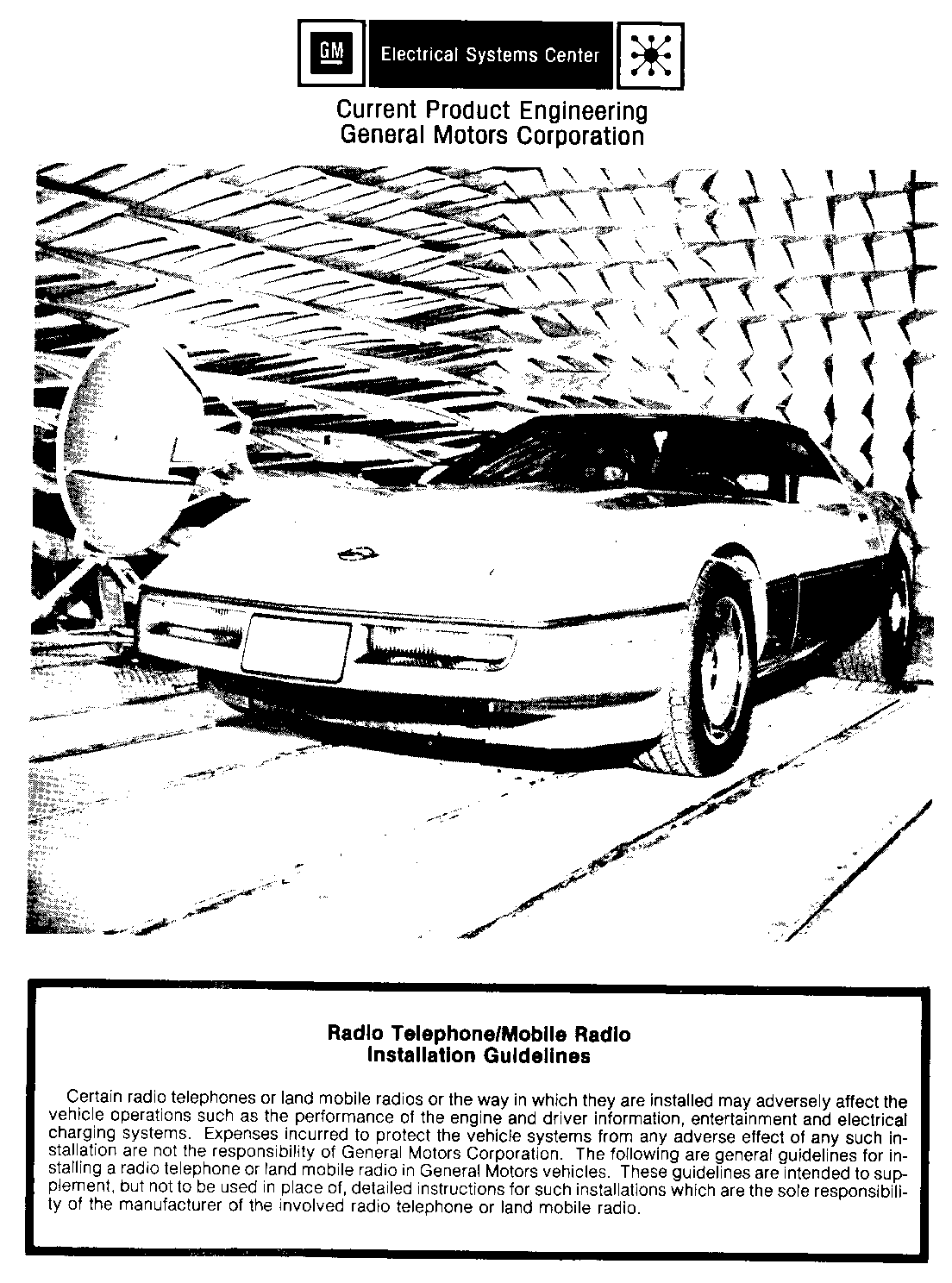
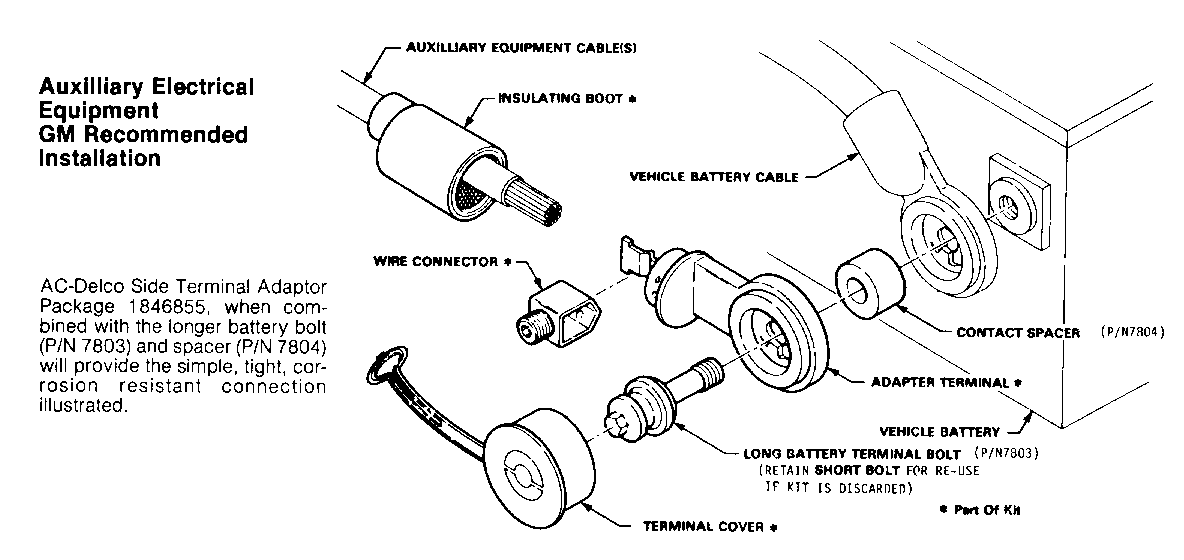
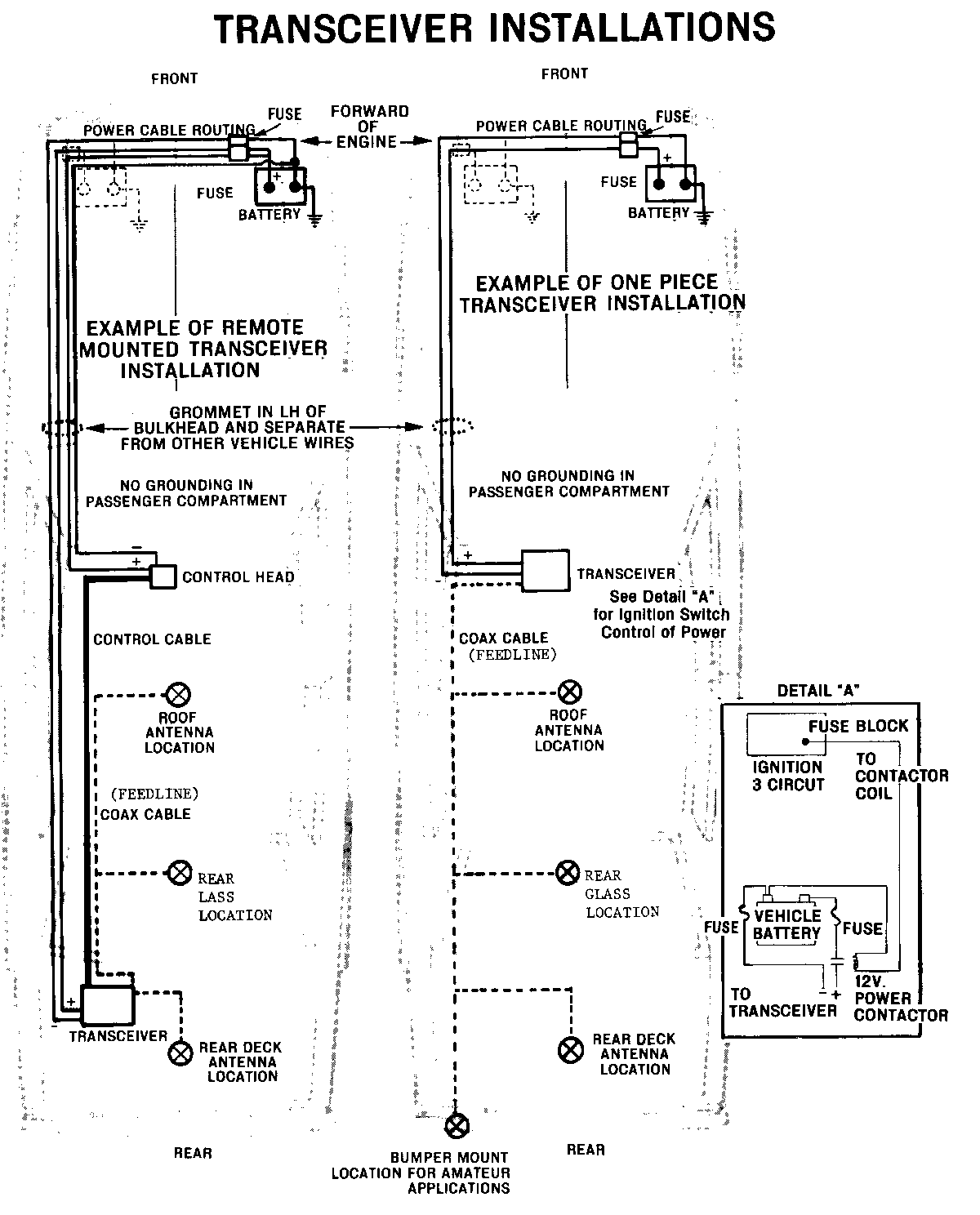
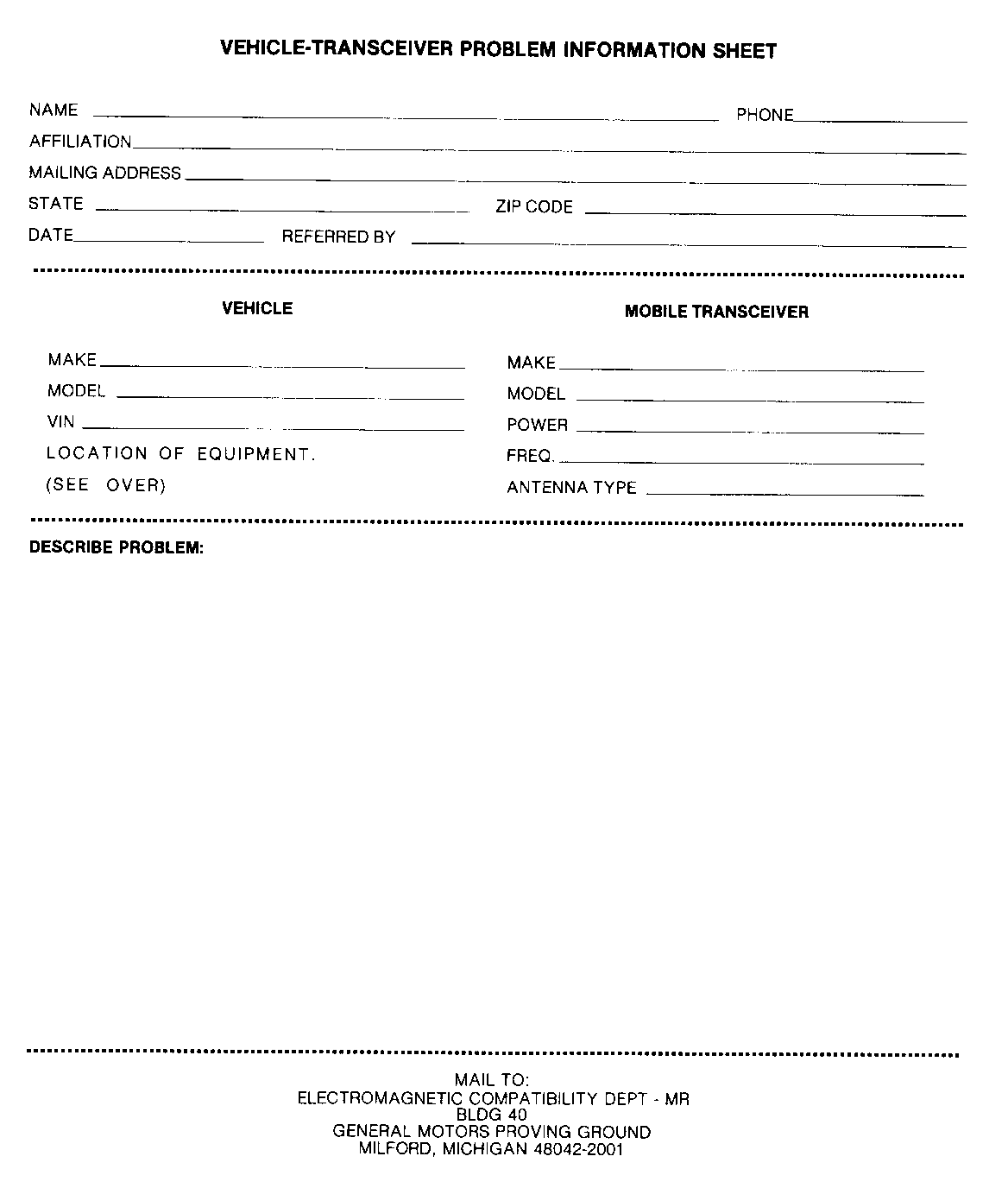
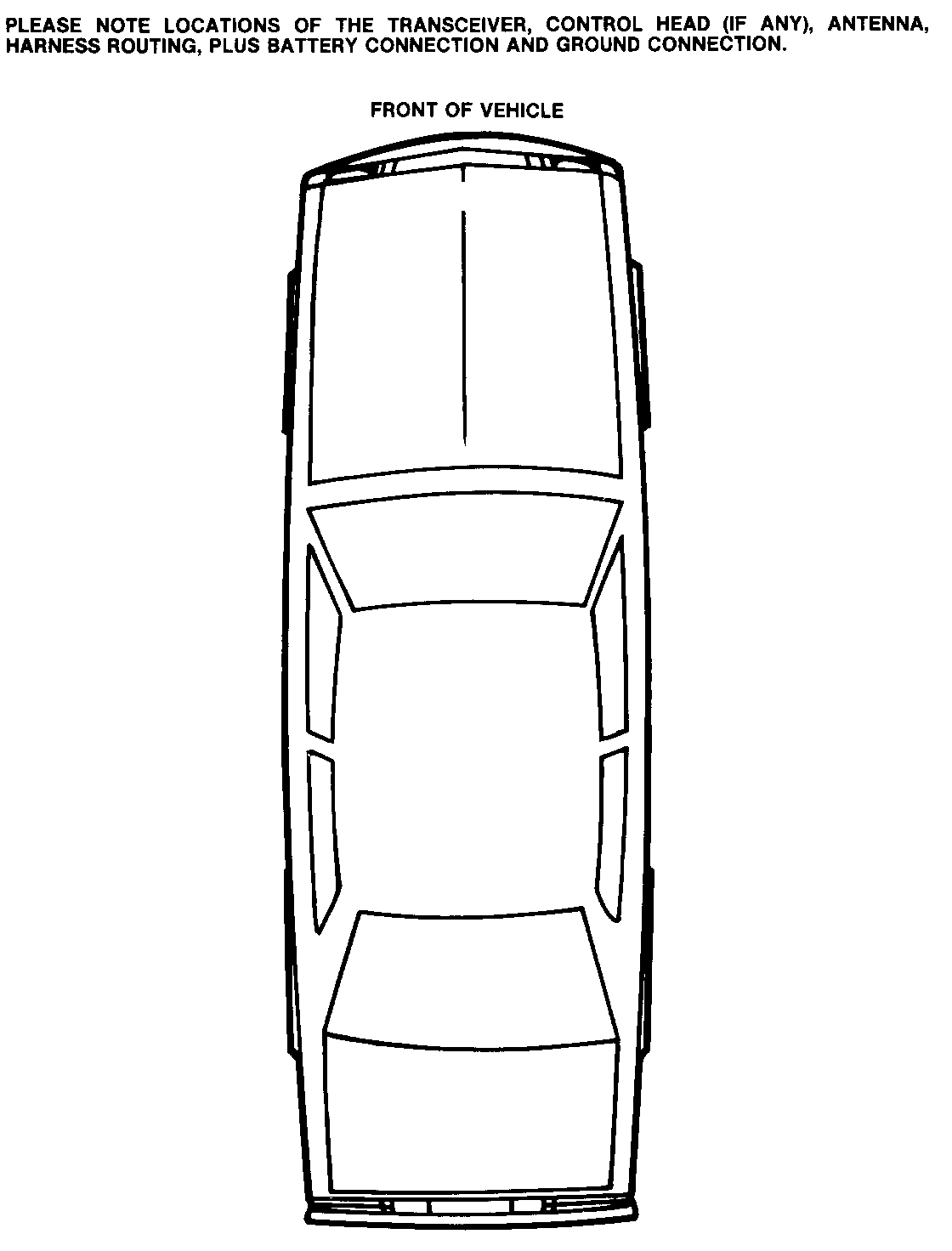
General Motors bulletins are intended for use by professional technicians, not a "do-it-yourselfer". They are written to inform those technicians of conditions that may occur on some vehicles, or to provide information that could assist in the proper service of a vehicle. Properly trained technicians have the equipment, tools, safety instructions and know-how to do a job properly and safely. If a condition is described, do not assume that the bulletin applies to your vehicle, or that your vehicle will have that condition. See a General Motors dealer servicing your brand of General Motors vehicle for information on whether your vehicle may benefit from the information.
